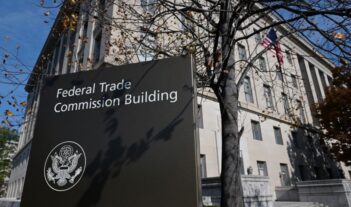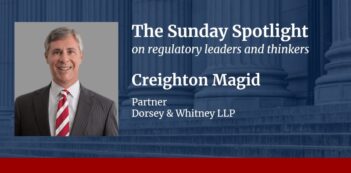
Regulatory reform bill’s requirement of oral evidentiary hearings for rulemakings may prove to be ineffective.
Senators Rob Portman (R-Ohio) and Heidi Heitkamp (D-N.D.) recently introduced the first bipartisan regulatory reform bill, the Regulatory Accountability Act of 2017 (not to be confused with the U.S. House of Representatives bill with the same name). Thanking Senator Heitkamp and calling the bill “common-sense,” Senator Portman described the purposes of the bill when he introduced it:
“We need a smarter regulatory process that promotes job creation, innovation, and economic growth, while also continuing to protect public health and safety and the environment. This legislation would bring our outdated federal regulatory process into the 21st century by requiring agencies to use the best scientific and economic data available, strengthening checks and balances, and giving the public a voice in the process.”
Despite having many characteristics consistent with Senator Portman’s claims, the bill contains one glaring error.
Section 3(e) of the bill requires an agency to conduct an oral evidentiary hearing, including cross-examination, with respect to “genuinely disputed” “specific scientific, technical, economic, or other complex factual issues” in any rulemaking expected to have an annual effect on the economy of $100 million or more. More than 100 rulemakings a year have such an impact and each of those rulemakings raises many issues that could trigger the Section 3(e) right to cross-examination.
Section 3(e) is a variant of “formal rulemaking,” a procedure that requires agencies to add a limited right of cross-examination to the already time-consuming, demanding, and resource-intensive process of notice and comment rulemaking. Formal rulemaking has a long and disastrous history.
Before 1973, courts required agencies to use formal rulemaking in the many circumstances in which a statute required the agency to provide a “hearing.” The result was what the U.S. Supreme Court repeatedly characterized as “nigh interminable” hearings. The Supreme Court put a halt to that absurd practice in its opinion in United States v. Florida East Coast Railway. The Court held that the term “hearing” was ambiguous. In the context of a rulemaking that raises only issues of “legislative fact,” the requirement to hold a “hearing” can be satisfied by providing parties an opportunity to express their views and to present data in writing.
Drawing a distinction between adjudicative and legislative facts is critical to understanding how agencies substantiate their decisions to act. Adjudicative facts are facts unique to the individuals who are involved in a dispute, e.g., who, what, where, when and why. Like courts, agencies use oral hearings and cross-examination to resolve contested issues of adjudicative fact. Legislative facts are the kinds of facts that are the basis for legislative action, e.g., whether emission of various substances into the atmosphere or into water bodies causes damage to public health, or whether long-term exposure to a toxic substance causes harm to workers.
After the Supreme Court’s opinion in Florida East Coast, every federal court has now agreed that, while it makes sense to use oral evidentiary hearings to resolve disputed issues of adjudicative fact, it makes no sense to require an agency to use oral evidentiary hearings to resolve disputed issues of legislative fact.
Every federal judge who has addressed the question in recent decades has concluded that the process of submitting written views, data, and analysis is at least as effective and far more efficient than an oral evidentiary hearing for purposes of resolving contested issue of legislative fact.
Congress experimented with a procedure remarkably similar to the procedure described in Section 3(e) forty years ago. In the Magnuson-Moss FTC Improvement Act of 1975, Congress provided a limited right of cross-examination for disputed material issues of fact raised during consumer protection rulemakings. After years of careful study of the use of that procedure, the Administrative Conference of the United States (ACUS) concluded in 1980: “The procedures in the Magnuson-Moss Act have not proved to be effective in controlling the agency’s discretion in its exercise of a broad delegation of power, and it is recommended that Congress not rely on such procedures for such a purpose.”
The ACUS conclusion was well supported, as American University Washington College of Law’s Jeff Lubbers recently wrote. By 1980, the FTC had abandoned completely all efforts to issue rules using the procedures required by the Magnuson-Moss Act. The FTC also abandoned as impossible to complete five ongoing rulemakings to which it had already devoted six to 10 years of effort.
Congress should heed the advice of ACUS and refrain from repeating the mistake it made half a century ago.
This essay is part of a series, entitled Assessing the Regulatory Accountability Act.
The photograph above is of the former chambers of the U.S. Senate and U.S. Supreme Court.




